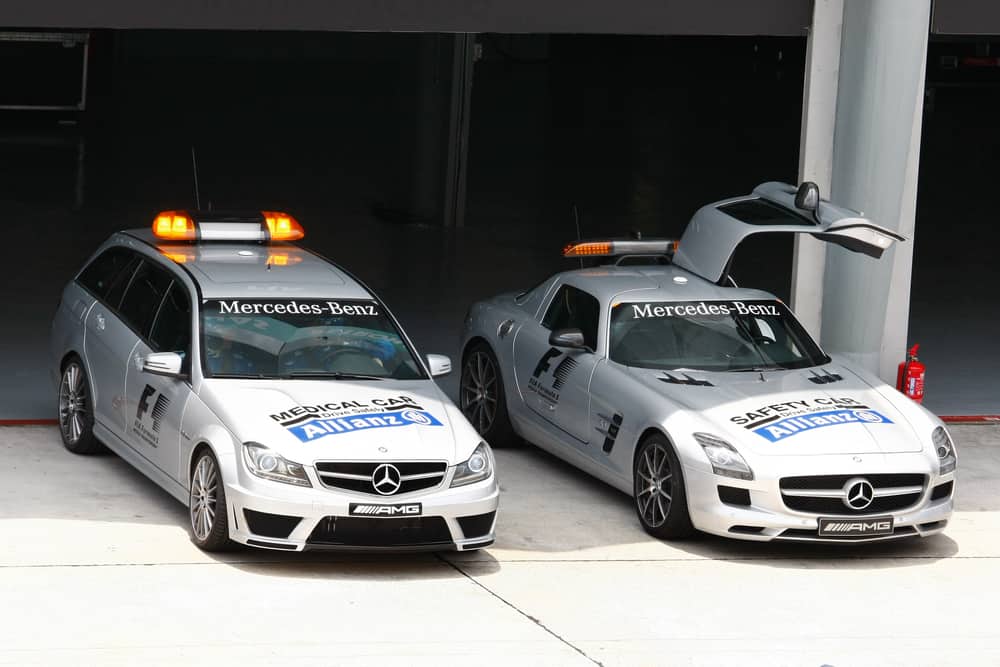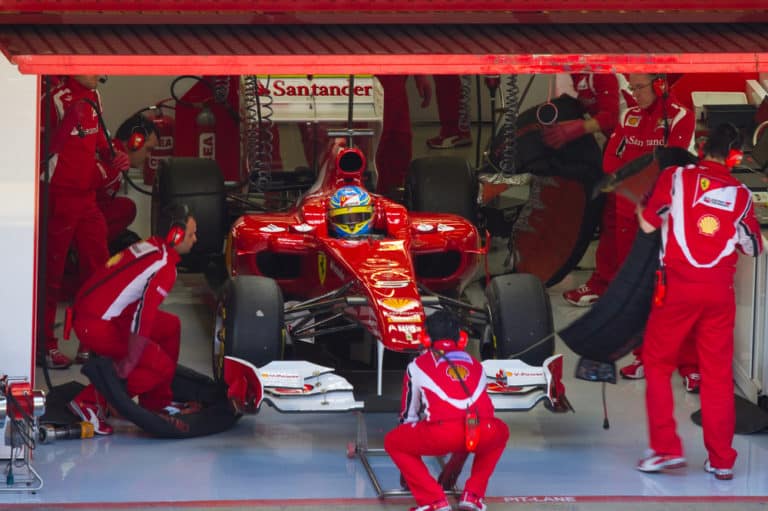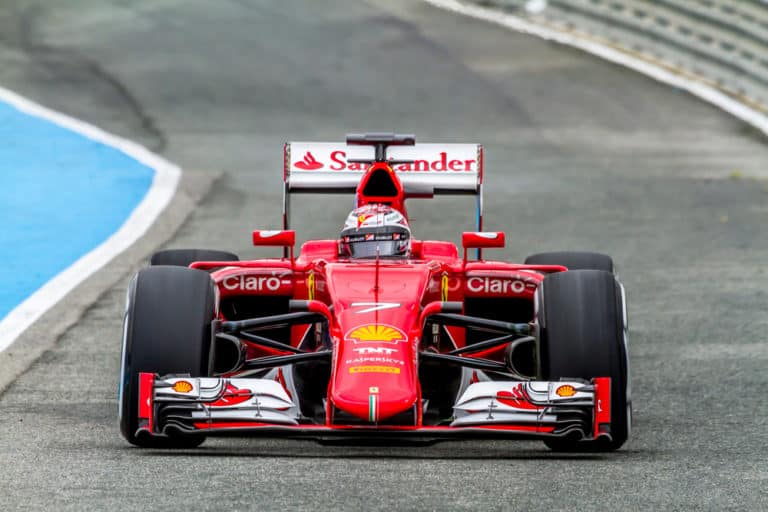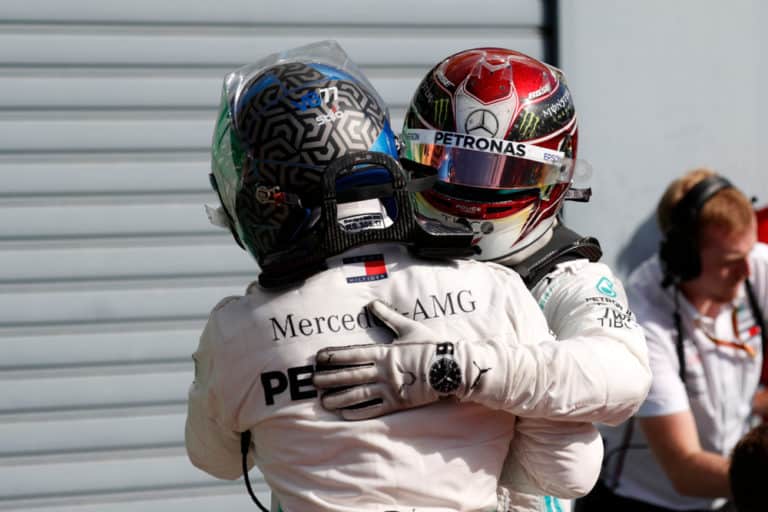We always see a Mercedes or Aston Martin leading the F1 cars when dangerous conditions are on the racetrack during a Grand Prix. We know that Mercedes and Aston Martin are high-powered vehicles, but are these safety cars faster than the F1 cars they lead?
F1 cars are capable of reaching speeds well over 200 miles per hour during a race; F1 cars can accelerate from 0 to 60 miles per hour in 2.6 seconds. The safety car can also reach between 195 and 200 miles per hour but takes longer to do so; the safety car reaches 0 to 60 miles per hour in 3.5 seconds.
If we were to compare engine size between the safety car and an F1 car, we wouldn’t be wrong in thinking that the safety car would be much faster than the F1 car. The safety car runs with a V8 turbo engine, while an F1 car runs with a 1.6L turbo V6 engine. This article will look at the research on whether the safety car is faster than the F1 car.
If you’re looking for some F1 merchandise, check out the awesome stuff at the official F1 store here.
Are Safety Cars Faster Than F1 Cars?
It is common knowledge that a Mercedes AMG or Aston Martin are among the fastest production vehicles, and it makes sense to use these vehicles as safety cars in one of the world’s most popular motorsports. In this section of the post, we will look at the vehicles used as safety cars in the history of F1 to compare the speed differences between the safety car and F1 cars.
Was The Porsche 914 From 1974 Faster Than The F1 Cars?
The Porsche 914 was used as a safety car in 1974 for the Canadian Grand Prix. The Porsche 914 had a top speed of 129 Miles per hour and did 0 to 62 mph in 8.7 seconds. The car was powered by a 2 Liter 4-cylinder engine. The formula 1 cars in this time did 0 to 62 miles per hour in about 4 seconds and had an estimated top speed of about 180 miles per hour.
In this comparison, it can be seen that the F1 car was definitely faster than the Porsche 914. So even though the Porsche 914 reached a respectable speed for the time, it could not compete with an F1 car.
Was The Lamborgini Countach From 1983 Faster Than The F1 Cars?
The Lamborgini Countach was used as a safety car in the 1983 Monaco Grand Prix. The Lamborgini Countach had a top speed of 181.4 miles per hour and did 0 to 62 mph in 5.9 seconds. The Lamborgini had a 3.9L V12 engine.
The F1 cars in this era were running with 3.5L V12 engines capable of doing 0 to 62 mph in 3 seconds. The fastest track speed was close to the top speed of the Lambo, which means that the top speed of the F1 cars was higher than that of the Lamborgini Countach.
Was The Lamborgini Diablo From 1995 Faster Than The F1 Cars?
The Lamborgini Diablo was used in 1995 during the Canadian Grand Prix. This is the safety car that comes the closest to being faster than an F1 car. The Lambo came out with a 5.7L V12 engine that was capable of doing 0 to 62 mph in 4.5 sec with a top speed of 200 miles per hour. This car was the fastest production car for a few years to come.
In 1995 the F1 cars had to reduce engine sizes from 3.5L to 3.0L this meant that a lot of the F1 cars went down from V12 engines to V10 engines. The change did not make a real difference in the performance of the F1 cars. The F1 cars were still doing 0 to 62 miles per hour in 3 seconds and achieved top speeds on the track over 210 miles per hour.
Is The Mercedes AMG Safety Car Faster Than An F1 Car?
The current model of Mercedes being used as a safety car is the AMG GT Black Series; this car is powered by a 4L twin-turbo V8 engine and is capable of doing 0 to 62 mph in 3.2 sec with a top speed of 202 miles per hour.
The modern F1 car does 0 to 62 miles per hour in 2 seconds with top speeds of over 230 miles per hour. So as impressive as the safety car is, it will not be able to compete with the F1 car.
Is the Aston Martin Vantage Safety Car Faster Than An F1 Car?
The Aston Martin Vantage that is currently used as the safety car in F1 has been dubbed a turtle by some of the leading F1 drivers. The Aston Martin is powered by a V8 turbo engine and can reach 0 to 62 mph in 3.5 sec with a top speed of only 195 miles per hour. It’s not slow at all, but it is slower than the AMG.
We already saw that the modern F1 cars are faster than the AMG, which means that the Aston Martin is in no way a contender for being faster than an F1 car.
Was The F1 Safety Car Always Faster Than Average?
If drivers like Verstappen refer to the Aston Martin safety car as a turtle, then one can only wonder what they would call the other safety cars that were used in the history of F1. Although the safety cars that were mentioned in this post were all faster than average, the next list of the vehicle was pretty average.
Here is a list of average cars that were used as safety cars in the past:
- Fiat Tempra 16V – Used in 1993 Brazilian Grand Prix.
- Opel Vecta – Used in the 1994 San Marino Grand Prix.
- Honda Prelude – Used in the 1994 Japanese Grand Prix.
- Renault Clio – Used in the 1996 Argentine Grand Prix.
We can all agree that this list of safety cars will not even make it onto a comparison for being faster than an F1 car, but it is interesting to see that before the era of Mercedes AMG, they did play around with different safety car options.

Conclusion
F1 cars have always been faster than safety cars, which leads them to poor racing conditions. F1 cars are designed to be fast, especially around multiple sharp corners. Safety cars are by no means slouches, but they will never be able to reach the same speeds under the same conditions as their F1 counterparts.
Even the cars from Porsche and Lamborgini that were used as safety cars before could not compete with the F1 cars of that time, even though the Lamborgini Diablo came close.






